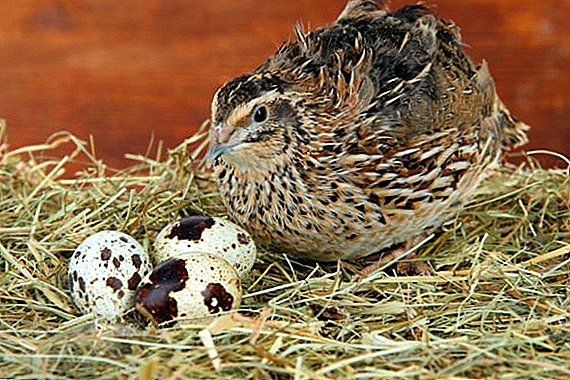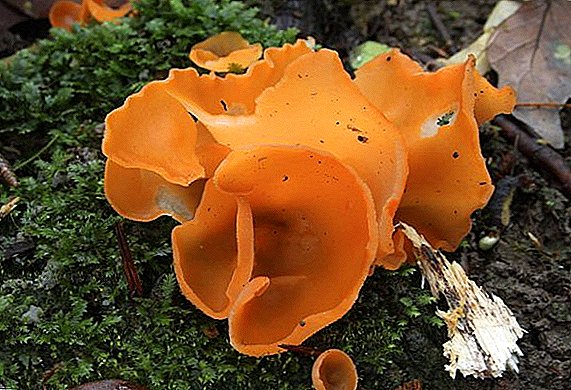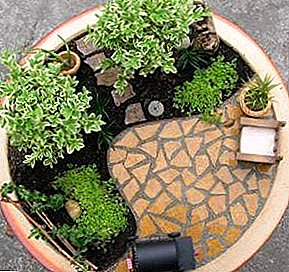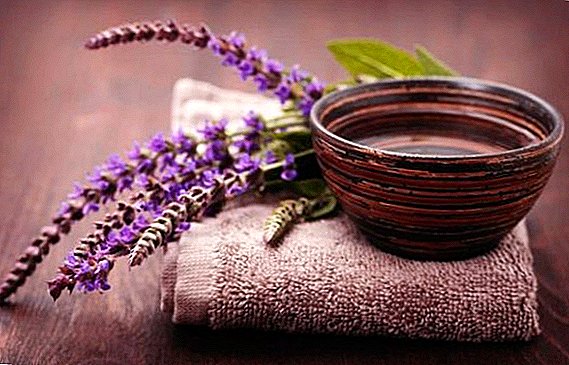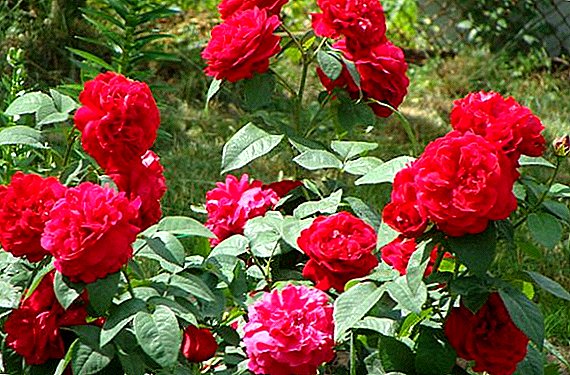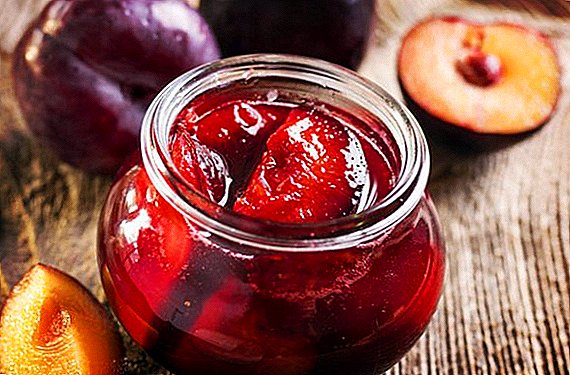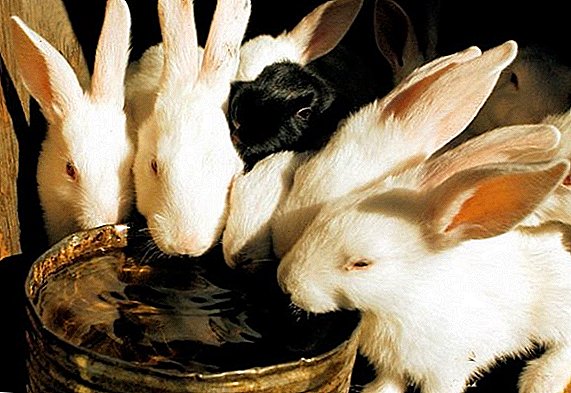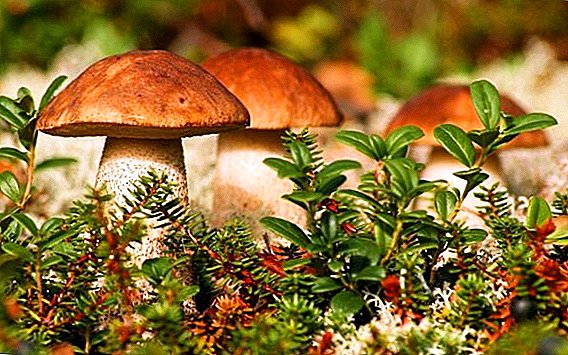 The moderately continental climate, the proximity of water bodies and five soil-climatic zones make the Rostov region a favorable place for the growth of fungi. The mushroom hunting season here begins in May and ends in early October. The growth of various fungi, both edible and non-edible, depends on air temperature, humidity and soil, which differ within the region and determine the main collection areas.
The moderately continental climate, the proximity of water bodies and five soil-climatic zones make the Rostov region a favorable place for the growth of fungi. The mushroom hunting season here begins in May and ends in early October. The growth of various fungi, both edible and non-edible, depends on air temperature, humidity and soil, which differ within the region and determine the main collection areas.
Edible Mushrooms
Rostov forests are rich in many different types of mushrooms. True, only a couple hundred of them are edible. Collection of inedible varieties is fraught with severe poisoning. Therefore, it is extremely important to know what the safe "gifts of the forest" look like, when and at what time to look for them, and also how to cook properly.
White mushroom
In addition, it is popularly known as bebik or boletus.  There are several types, of which the most popular:
There are several types, of which the most popular:
- pine (pine forest);
- birch;
- oak;
- spruce
- copper.
We recommend to get acquainted with edible types of mushrooms.
Despite the many varieties, apparently all white mushrooms are quite similar:
- The cap has a diameter of 8 cm to 30 cm. The shape is slightly convex, rounded, but becomes flatter with age. Externally matte. The color is different - from dark orange to red-brown. In the center is darker, and to the edges a little brightens. Tactile seems smooth and velvety; in dry weather it cracks, but after rain it becomes mucous. The flesh is not separated from the skin.
- The leg - most often has a height of up to 10-12 cm, and a diameter from 7 cm to 10 cm. It resembles a keg in shape, sometimes a mace, in old mushrooms it becomes cylindrical. The color is most often lighter than the cap; may be white, although there are instances in which the color of the legs fully coincides with the color of the cap. At the base of the legs, a grid of thin veins is distinguishable.
- Pulp - the color usually has a white, clear, although with age it turns yellow or becomes beige. The structure is dense, fleshy, soft, in older mushrooms it is slightly more fibrous.
Important! White mushroom contains a large amount of minerals, micro-and macronutrients. But after collecting without special treatment, he very quickly loses all these substances. - after 10 hours there will be half the benefit in it!
 Since the white mushroom has excellent taste, it is suitable for any kind of cooking - it can be dried and marinated, fried and boiled.
Since the white mushroom has excellent taste, it is suitable for any kind of cooking - it can be dried and marinated, fried and boiled.Familiarize yourself with the varieties and beneficial properties of ceps, as well as learn how to freeze them for the winter.
Spring Oyster
It is also called oyster mushroom beech, oyster mushroom whitish and oyster mushroom pulmonary. English speakers call this mushroom oyster mushroom, and Japanese people call it flat. Of all the species of oyster mushrooms, this one can most often be found in nature. Fruits in spring, especially densely - by the end of May. Most common in deciduous forests. It grows on fallen rotting trees; most often it is birch, oak and aspen, sometimes conifers.
We advise you to get acquainted with the methods of growing oyster mushrooms at home in bags, as well as methods of freezing and drying oyster mushrooms.
Appearance:
- The hat has a diameter of 4 cm to 8 cm, although it can sometimes grow up to 15 cm. The shape is fan-shaped or lingual. The color is light, creamy, whitish, slightly yellowing in old mushrooms. The edges of the cap are much thinner than the central fleshy part and are bent downwards.
- Leg - very short, no more than 2 cm. Grayish or white in color. Its base is slightly fleecy. It has an extension from bottom to top, often curved to the side. Hymenophore plates are rarely located and go down to the very bottom of the leg.
- The flesh is dense and juicy, almost the same color as the cap.
 Oyster mushrooms grow on trees in large clusters. Solitary representatives meet almost impossible. Oyster mushroom is very good for health, besides it is also a low-calorie product that suits those who follow a diet. Oyster mushrooms are very popular in many recipes. They can be fried, boiled, stewed, baked. They are added to meat, garnish, pies and buns, potatoes and vegetables, added to soups.
Oyster mushrooms grow on trees in large clusters. Solitary representatives meet almost impossible. Oyster mushroom is very good for health, besides it is also a low-calorie product that suits those who follow a diet. Oyster mushrooms are very popular in many recipes. They can be fried, boiled, stewed, baked. They are added to meat, garnish, pies and buns, potatoes and vegetables, added to soups.Raincoat
They also call it a giant raincoat, a giant raincoat, a spherical raincoat, a giant giant head, or a giant Langermania. This is truly a huge mushroom that reaches in diameter from 20 cm to 50 cm and can weigh up to 10 kg. It consists entirely of the fruiting body. Fruits throughout the summer and until early October. You can find on the edges of pine and birch stands, is also found in meadows and glades. Loves nitrogen-rich soil.
Find out what a rain cover mushroom looks like and where it grows.
Appearance:
- Hat - absent as such. The whole mushroom is a large fruit body in the shape of a pear or a ball. The color is snow-white, but with age it turns yellow; in very old representatives it becomes greenish. To the touch the surface is smooth, velvety.
- Leg - absent.
- The flesh is snow-white, as is the fruit body itself, dense and elastic. It has a noticeable and very pleasant aroma and taste. With age it turns yellow, becomes beige, in very old mushrooms it is brown-brown.
 Raincoat can perfectly replenish the diet, because it is useful and often used in medicine. It has a clear wound-healing effect, helps with cancer, cleanses the body of toxins, is favorable for diabetes. But to cook this mushroom is undesirable, because when boiling it, like a sponge, it absorbs too much water and becomes tasteless. For a raincoat frying is perfect. First you need to remove the shell, and chop the flesh layers, which are then fried in breading. Also, the headache can be dried - it dries well and quickly.
Raincoat can perfectly replenish the diet, because it is useful and often used in medicine. It has a clear wound-healing effect, helps with cancer, cleanses the body of toxins, is favorable for diabetes. But to cook this mushroom is undesirable, because when boiling it, like a sponge, it absorbs too much water and becomes tasteless. For a raincoat frying is perfect. First you need to remove the shell, and chop the flesh layers, which are then fried in breading. Also, the headache can be dried - it dries well and quickly.Important! In the food are suitable only young raincoats with white flesh. If the flesh is already a little yellow, this mushroom can not be eaten!
Chanterelle
Also chanterelle real or cockerel. Memorable and bright chanterelles are not to be confused with other mushrooms. In addition, they are absolutely safe and do not contain any insects and worms. And all because in the composition of these fungi there is a substance of cinnamonosis, which kills all pests. Chanterelles can be collected in the first decade of June, and then only from August to October. They love mixed and coniferous forests. Clusters pour out after thunderstorms. Most often you can find them growing on moss, in heaps of fallen leaves, in thick grass, under oaks, pines and spruces. Very fond of moisture and dampness. Grow in large groups.  Appearance:
Appearance:
- The hat has a diameter of 5 cm to 12 cm. The color is most often orange, but there are also pale yellow. It has the shape of an “inverted umbrella” - concave, as if pressed inward, of irregular shape, with wavy, curved edges. It happens in the form of a funnel. Feels smooth. The peel is separated with difficulty. Smoothly goes into the leg, with no visible borders.
- Leg - up to 10 cm long, up to 3 cm thick, solid, expanding upwards. With a hat is a whole. The color is often the same as the cap, although sometimes it is slightly lighter. Rare and wavy plates of hymenophore gradually descend from the cap on the leg.
- The flesh is firm, elastic, fleshy. May be slightly fibrous in the stalk. The color is usually white, sometimes a little yellow. If you press on the pulp in the cut, at the place of pressure will turn red. Raw mushroom has a light aroma of dried fruit and a slightly sour taste.
We advise you to read about where chanterelles grow, how useful they are, and how to pickle and freeze chanterelles at home.
Butter dish
The name of the fungus speaks for itself - they look oily, shiny, glossy. Gathering boletus in the first half of June, although some may appear in May. But still the mushroom season begins to boil in the summer and lasts until the autumn, namely, until the first significant cold weather. You can meet the abundance of oil in the pine forests of the Tarasovsky district, not far from Millerovo, Nizhnekundryuchenskaya and Veshenskaya. But they are not too shade-loving, so it is better to look for these mushrooms on the edges of forests, near paths and forest roads, on clearings and on plots with coniferous young trees.  Appearance:
Appearance:
- The cap is small in size, the maximum diameter is up to 15 cm. It has a hemispherical shape, occasionally found conical. Growing up, it becomes like a pillow. The cap is covered with a thin, glossy and sticky skin, mucous to the touch. The color is often changeable and depends on many conditions - the type of wood, the amount of light, the type of oil can, therefore it is slightly yellow, ocher, brown and brown. Sometimes you can find color transitions and spots that dilute the main color. Hymenophore tubular.
- Leg - length is from 4 cm to 10 cm, and up to 4 cm thick. The shape is cylindrical. The color is white, but darkens downwards, it can become the same as the color of the cap. Sometimes the leg seems to be grainy because of the whitish liquid that has protruded from the pores and is frozen.
- The flesh is soft but very dense. The color is white and yellowish. On the cut, the color may turn a bluish or reddish hue. Odor pulp most often does not have, in rare cases, it smells like needles.
Did you know? Phenylethylamine - substance causing a feeling of being in love. It is contained in such innocuous boletus and works like an aphrodisiac.
May mushroom
Also known as ryadovka may, george mushroom and calocibe may. This mushroom appears when the rest is still far from fruiting, namely in the spring, in the middle of May. But by the summer Mayeviki completely disappear. It grows in groups or rows, which is clearly traced in the name (row), forms circles in the grass.  Calociba occurs everywhere, not only in the forests. It can be found on the edge of the forest, in the meadows, in the steppes and meadows, near the paths and roads. These mushrooms can grow even in the yard, on the lawn or in the garden. However, mushroom pickers do not really like to go for this mushroom, since apart from him, during this period, there are almost no other varieties found, and therefore one can return home with a rather meager “catch”.
Calociba occurs everywhere, not only in the forests. It can be found on the edge of the forest, in the meadows, in the steppes and meadows, near the paths and roads. These mushrooms can grow even in the yard, on the lawn or in the garden. However, mushroom pickers do not really like to go for this mushroom, since apart from him, during this period, there are almost no other varieties found, and therefore one can return home with a rather meager “catch”.
It will be interesting to know which mushrooms grow in the Volgograd, Saratov, Leningrad, Kaliningrad regions and Bashkiria.
Appearance:
- Hat - with a diameter from 4 cm to 10 cm, white or cream color. Form rounded, hemispherical, sometimes cushion-shaped. To the touch the cap is dry and rather smooth. Over time, it may become flatter, open up; edges can be bent up and deformed.
- The leg is rather short and thick, from 2 cm to 7 cm long and from 1 cm to 3 cm thick. It looks smooth and solid. The color is usually the same as that of the cap, but sometimes it is slightly lighter.
- The flesh is white, very dense, thick. It has a distinct mealy taste and smell.
Winter monkey
They also call the collibium velvety-foot, flammulin velvety-foot and winter mushroom. It grows on the trunks of trees - on the dead, damaged and weak. Most often on willows and poplars. Destroys the wood of the tree.  It grows in large groups, so it is not difficult to find it, especially during thaws. Mushroom season on honey agaric lasts from autumn to spring. These mushrooms prefer woodland. Widely found in the Semikarakorsky region and in the coastal zone of the Don.
It grows in large groups, so it is not difficult to find it, especially during thaws. Mushroom season on honey agaric lasts from autumn to spring. These mushrooms prefer woodland. Widely found in the Semikarakorsky region and in the coastal zone of the Don.
Appearance:
- The cap has a diameter from 2 cm to 10 cm. The color is yellowish, it may have an orange impurity or a brownish tint. The shape of the convex, rounded edges down, flattens with age. It has rare plates that differ in different lengths and can be ocher or white. The main difference from other types of mushrooms is the absence of a so-called "skirt" under the bonnet.
- Leg - long and thin. The height is from 2 cm to 7 cm, and the diameter is less than 1 cm. The color at the top under the cap is yellowish-brown, and brown at the bottom. Smooth and velvety, dense.
- The flesh is yellowish, almost white.
Boletus
It is called differently aspen or redhead. This mushroom got its name from the place of growth, because it prefers to grow most of all under aspens, and due to the fact that the color of its cap is very similar to autumn leaves. Aspen is very common.  Sometimes it grows in groups, and sometimes one by one. Prefers wet forests - mixed and deciduous, especially located in the lowlands. You can find it in the thick grass, in the bushy thickets, on the side of the forest path or in the moss. Especially many of these mushrooms are found in the aspen forests near Kamensk. Fruits, from mid-June and ending in the fall.
Sometimes it grows in groups, and sometimes one by one. Prefers wet forests - mixed and deciduous, especially located in the lowlands. You can find it in the thick grass, in the bushy thickets, on the side of the forest path or in the moss. Especially many of these mushrooms are found in the aspen forests near Kamensk. Fruits, from mid-June and ending in the fall.
Familiarize yourself with species of aspen mushrooms, and also learn how to identify a false aspen.
Appearance:
- The hat - depending on the type is from 5 cm to 30 cm. The shape is hemispherical, it sits tightly on the leg, as if embracing it. Reminds a thimble for a finger. In more adult fungi, the shape becomes pillow-shaped, convex, and in very old ones it flattens out noticeably. Its color is reminiscent of autumn leaves - orange, brownish, brick-reddish, coffee. It feels felted and sometimes velvety to the touch, but it is always dry. Peel is not removed.
- The leg is rather high, reaching a height of 22 cm. It has the shape of a mace and thickens downwards. Covered with small rough scales of dark brown color.
- Pulp - has a dense and fleshy structure, rather elastic. The color is white, but on the cut it changes its shade to blue, and eventually turns black.
Real ginger
Very bright mushroom, with a noticeable appearance and excellent taste. Mushrooms grow on sandy soil. Coniferous forests are preferred, although sometimes they can be found in the pine forest. Most often grow under larch and young pines, located mainly on the north side of the trees. These mushrooms always grow in groups, but at the same time never ripen.  Therefore, be sure that if you find one camelfish, then somewhere else in the grass or under the leaves several more of his fellows hid themselves. The fruiting season lasts from the end of July until the end of August, although sometimes it lasts until the beginning of September. In the Rostov region, their main focus is located near the village of Degtevo in the Millerovo district.
Therefore, be sure that if you find one camelfish, then somewhere else in the grass or under the leaves several more of his fellows hid themselves. The fruiting season lasts from the end of July until the end of August, although sometimes it lasts until the beginning of September. In the Rostov region, their main focus is located near the village of Degtevo in the Millerovo district.
Salted mushrooms for the winter.
Appearance:
- The cap is up to 15 cm in diameter. It has a shape concave centrally inward, the edges bend downwards. The color of the cap may be yellowish, orange and orange-red. It feels sticky and smooth. The plates fuse with the leg, are often and densely.
- Leg - from 7 cm to 9 cm in length. Cylindrical shape, with emptiness inside. Very fragile, it can crumble when pressed.
- The flesh is initially orange, bright, but over time, due to oxidation processes, it changes color and becomes greenish. The smell is not very expressive, but the taste is bitter, gives tartness.
Important! Ryzhiki - the only mushrooms that, when salted, are ready to eat in two weeks!
Lilovonogaya row
It is called differently - trichomol, two-tone row, blue leg, blue-tip, blue root. These mushrooms are called arrays because of the nature of their growth: they grow in large groups in the form of rows. Often located so close to each other that the hat of one mushroom can cover the top of the hat of another.  Fruiting blue foot in the Rostov region since the beginning of autumn, and disappears with the first significant cold snaps. Especially a lot of Trichomol can be found in the Schepkin forest near Orbital and in the Chertkovsky region. Растут они на земле, любят известковую и песчаную почву. Лес предпочитают лиственный, особенно если в нём много ясеней.
Fruiting blue foot in the Rostov region since the beginning of autumn, and disappears with the first significant cold snaps. Especially a lot of Trichomol can be found in the Schepkin forest near Orbital and in the Chertkovsky region. Растут они на земле, любят известковую и песчаную почву. Лес предпочитают лиственный, особенно если в нём много ясеней.
Замаринуйте рядовку, и узнайте какие вкусовые качества имеет рядовка желто-бурая, землистая, зелёная, фиолетовая, серая и тополиная.
Внешний вид:
- The cap - the size varies from 6 cm to 15 cm, in rare cases it can reach even 25 cm. The top is yellowish in color, closer to the beige, a little purple in the top. The touch is smooth. Bottom plates of the hymenophore are quite wide and thick, and their color is cream.
- Leg - height is from 5 cm to 10 cm, and thickness is about 3 cm. Females have a clearly visible fibrous ring on the leg. Color - purple, noticeable.
- The flesh is rather fleshy. The color is purple-gray, gray and pure white. Her taste is pleasant, a little sweet, and the smell is similar to the scent of fresh fruit.

Did you know? Matsutake - so called Japanese ryadovka. In the Land of the Rising Sun, this mushroom is valued as highly as truffle in European countries; sometimes the cost of one copy reaches $ 100.
Morel
Calm also called. Mushrooms are unusual, very early and sometimes inspire distrust with their appearance. However, they are quite edible and very tasty. Morels can be found in coniferous and deciduous forests, especially alders and aspen trees are suitable for them. The soil is preferred humus and very wet, but can grow on sandy soil or on disturbed land - for example, in places of fire pits, on the slopes of ravines and hills, in ditches or on the side of the road, on clearings and clearings.  Abandoned apple orchard will be especially attractive for morels. The early fruiting period is from the beginning of April to the first summer days, however, if spring is very warm, morels may appear at the end of March. They are found everywhere in forest glades or on mossy and flooded places right after the snow melts and the ground warms up a little.
Abandoned apple orchard will be especially attractive for morels. The early fruiting period is from the beginning of April to the first summer days, however, if spring is very warm, morels may appear at the end of March. They are found everywhere in forest glades or on mossy and flooded places right after the snow melts and the ground warms up a little.
Morels and lines: how to distinguish these mushrooms.
Appearance:
- The cap is shapeless and very wrinkled, from 5 cm to 10 cm in height and 3 cm to 8 cm in width. The shape is usually in the form of a cone, very porous, with deep cells. The color is mostly brown, but can be brown, yellow-ocher, grayish, brown-brown, brown-black. The edges of the cells are most often colored dark or black.
- Leg - height from 3 cm to 7 cm, and thickness from 1.5 cm to 3 cm. Light, almost white in young, beige or creamy-yellow in color in older adults, and in very mature mushrooms it becomes brown and powdery. Inside the leg is completely hollow and grows together with the cap into a single unit. The shape is cylindrical, slightly thickened towards the base.
- The flesh is a light color, maybe white, beige, pale yellow. The consistency waxy, very fragile and tender.
 Morels can not be eaten raw. They must undergo heat treatment. Before use, it is advisable to boil them for at least an hour. You can dry, but in this case, cooking is not needed.
Morels can not be eaten raw. They must undergo heat treatment. Before use, it is advisable to boil them for at least an hour. You can dry, but in this case, cooking is not needed.Forest Mushroom
In the people it is called a cap or grandmother. One of the most popular types of mushrooms. Find it is not so difficult, because it has a wide range of distribution. Grows in large ring-shaped colonies, as well as rows, forming the so-called "witch circles". Most often, champignon can be found near the anthills.  Fruiting time of forest champignon begins in the first half of summer and lasts until the first serious cold snaps, which most often occur in October. It prefers to grow in mixed and coniferous forests, but in deciduous forests you can find only single representatives. In the Rostov region is most often found in the Chertkovsky district.
Fruiting time of forest champignon begins in the first half of summer and lasts until the first serious cold snaps, which most often occur in October. It prefers to grow in mixed and coniferous forests, but in deciduous forests you can find only single representatives. In the Rostov region is most often found in the Chertkovsky district.
Appearance:
- The cap is from 7 cm to 10 cm in size. In young mushrooms it has an ovoid or bell-shaped form, but with age it opens and flattens. Color - brownish, brown, mixed with rust. The hat is rough and dry to the touch, as it is covered with small dark scales. Hymenophor happens as light, practical white, and dark brown.
- The leg is not very long, most often it does not grow above 6 cm, it is no more than 1.5 cm in thickness. It has a cylindrical shape, on which a slight thickening at the base forms.
- The flesh is white in color, but when cut, it oxidizes and changes shade to reddish. It has a clear, purely mushroom flavor, similar to aniseed.

Inedible, poisonous mushrooms
The Rostov Region is rich not only in tasty, healthy and edible mushrooms. In addition to them, inedible, or simply poisonous species are often found here. And in order to accidentally hit a dangerous “friend” in the basket, you need to know what kind of mushroom it is, how to distinguish it from edible “fellows”, in what places and at what time it bears fruit.
Death cap
The people nicknamed the white fly agaric and green mushroom. One of the most dangerous mushrooms in the world. Although people are not often poisoned by a toadstool, in some cases, death is likely to occur by more than 90%. Toadstool is easily confused with other edible mushrooms - mushrooms and russules.
It is useful to learn - how to distinguish pale toadstool.
The period of fruiting in the toadstool begins in the last summer decade and lasts until such time as the autumn colds become stable. It chooses mainly deciduous forests for its habitats, especially those with many beeches and hornbeams. Prefers humus soil. Often it can be found in park areas. In the Rostov region is most common in the northern part.  Appearance:
Appearance:
- The cap is 5 cm to 15 cm in diameter. It is hemispherical in shape and flattens with age. It has a smooth edge. The color is greenish, olive, grayish. To the touch, the surface appears to be fibrous.
- Leg - has a height of 8 cm to 16 cm. Quite thin, diameter in thickness from 1 cm to 2.5 cm. The form has a cylindrical, but thickens downwards in the form of a bag. Often covered in moire patterns. The color is white or the same as the cap.
- The flesh is white. When cut, the color in the air does not change, remaining white. Pretty meaty. Has inexpressive, but pleasant mushroom aroma and soft taste.
Royal Amanita
Dangerous fungus causing severe poisoning. It mainly grows in coniferous forests. It grows mainly under spruces and pines. Sometimes it can be found in a mixed forest. In the hardwood - this is an extremely rare guest, and even then only in cases where there are birches. Soil fungus. Usually grows singly. It begins to bear fruit in mid-July, and disappears only in late autumn. Distributed in the northern and western regions.  Appearance:
Appearance:
- The hat is from 7 cm to 20 cm. In young animals it looks like an egg and is tightly pressed to the leg. With age it opens, becomes hemispherical, in old fungi it flattens and may even be concave in the central part. The entire surface is covered with white flakes or warts. The color is brownish, yellow-brown, ocher-yellow, brown-ocher, in the center has a rich brown color.
- Leg - height from 9 cm to 20 cm, thickness from 1 cm to 2.5 cm. Above thinner than below. At the bottom has a clear thickening in the form of a ball or egg. Under the cap there is a "skirt". The leg itself has a velvety, fibrous surface. The color is white or almost white.
- Pulp - has a brownish color, sometimes ocher, olive, pale yellow or yellow-white. Has no special flavor. The consistency is fleshy, but fragile.
Did you know? Despite the fact that all types of fly agarics are recognized as poisonous and inedible, in ancient times, under the leadership of the Roman commander Lucullus, who imagined himself a gourmet, one of the species of this mushroom, which has since been known as Caesar’s mushroom or Caesar's mushroom, was served on the table.
Amanita red
This fly agaric is not only poisonous, but also contains psychoactive substances. The amount of poison in it is not very large, therefore, in order for it to be fatal, a person needs to eat at least 15 pieces. Nevertheless, the substances contained in the fungus cause poisoning of the body, produce a dissociative and hypnotic effect, and also provoke the death of brain cells.  The red fly agaric loves moist and sour soil. It grows in all types of forests, but most often occurs in symbiosis with spruce, birch, willow and oak trees. Often it can be found even in the nearest park or square. The growing season lasts from August to October.
The red fly agaric loves moist and sour soil. It grows in all types of forests, but most often occurs in symbiosis with spruce, birch, willow and oak trees. Often it can be found even in the nearest park or square. The growing season lasts from August to October.
Amanita - types and medicinal properties.
Appearance:
- The cap is from 8 cm to 20 cm in diameter, in young stock it looks like a ball welded to the leg. With age it opens, flattens, becomes similar to a saucer, it is concave inwardly in the center. Color - red, bright, can be red-orange. The skin is smooth and shiny, sticky and mucous, covered with warty white flakes on top.
- The leg is long and thin, it can be from 8 cm to 20 cm high and up to 2.5 cm thick. The color is white or yellowish-white. At the bottom has a thickening in the form of a tuber. In maturity inside becomes hollow.
- The flesh is mostly white, but under the skin of the cap has a yellow or pale orange color. The taste is sweetish, but the flavor is weak and barely noticeable.
Sulfuric row
It is also referred to as sulfur sulfide or sulfur yellow. Many rows are edible mushrooms. But among them are not so rare and poisonous species. Sulfuric acid is slightly toxic - it has low toxicity and causes easy poisoning.  It can be found in mixed or deciduous forests. Especially careful you need to be, looking for mushrooms under beeches and oaks, under pines and firs, because it is under these trees that sulfur rows love to settle. The fruiting period falls on the mushroom season and lasts from the end of August or the beginning of September to the first serious frosts.
It can be found in mixed or deciduous forests. Especially careful you need to be, looking for mushrooms under beeches and oaks, under pines and firs, because it is under these trees that sulfur rows love to settle. The fruiting period falls on the mushroom season and lasts from the end of August or the beginning of September to the first serious frosts.
Appearance:
- The cap has a diameter of 3 cm to 8 cm. It is convex in shape, hemispherical, flattens, opens with age and may have a center concavity. It has a gray-yellow color, which with age becomes slightly rusty or slightly brown. To the touch the cap is smooth and velvety.
- The leg is thin and long, it can be from 3 cm to 11 cm long and from 0.5 cm to 1.8 cm thick. Sometimes it is straight, sometimes narrows at the bottom, and sometimes - upwards. The color is non-uniform - at the top is bright yellow, and below is gray-yellow. Sometimes it is covered with slightly darker scales when it gets old.
- The flesh is greenish or sulfur yellow in color. It has a pronounced peculiar smell - it can smell like hydrogen sulfide, tar. The taste is repulsive, slightly bitter, may have a mealy tinge.
Mushroom places of the Rostov region
Throughout the Rostov region, mushrooms are quite common - here is suitable soil for them and a favorable climate. But in some places mushroom hunting may be particularly successful. First of all, these include:
- Millerovsky district, especially around the village of Dyogtevo, pine plantations of the city of Millerovo;
- suburbs of Kamensk-Shakhtinsky;
- Chertkovsky district;
- a lot of different mushrooms in the pine plantations of the Nizhnekunduchenskaya village;
- Tarasovsky district;
- Semikarakorsky district;
- the coastal zone of the Don;
- Schepkinsky forest in Rostov-on-Don.

Did you know? Mushrooms - one of the most ancient creatures on Earth, because their age exceeds 400 million years. They existed along with ferns in the days of dinosaurs, but, unlike ferns, not only did not become extinct, but they did not even shrink. It is believed that all species that were in prehistoric times are still preserved.
Mushroom picking rules
Even experienced mushroom pickers are not insured that a poisonous mushroom is not in their basket, and beginners are even more so. However, in some cases, edible mushrooms can also be poisonous and harm health. To avoid this, you need to know the basic rules for collecting mushrooms:
- If you are a beginner, carefully read the literature and images of mushrooms before mushroom hunting, so that you can immediately distinguish poisonous from safe ones. Or take with you a seasoned and experienced mushroom picker.
- Mushrooms very much absorb harmful substances and heavy metals, so in no case should you pick mushrooms in the city, near the roads and factories, because in this case, even edible varieties will be dangerous to health. The best and safest mushroom areas are forests and ravines, meadows and glades, far from human activity, where the air is clean and the soil is not polluted by toxic waste.
- Always carefully examine each mushroom before putting it in the basket. Make sure that it is not old, not wormy and not damaged.
- If you have doubts about whether you hold a poisonous or edible specimen in your hands, it is better to discard it and take only those that you are 100% sure of.
- The container to which the "catch" is sent must be made from natural materials - a woven bag or a basket. It is better to refuse packages.
- Collecting mushrooms, they can not be pulled out of the ground, because it damages the mycelium, because of what then in this place the new young will not grow. It is better to gently cut the leg off the ground with a knife.
- Ignore all the mushrooms in which the leg ends with a tuber-like hollow thickening - most often they are poisonous.
- The best time to go to the forest for mushrooms is early morning.
- Never taste mushrooms that have not been cooked yet.
- Prepare the "catch" as soon as possible after collection.
- Mushroom decoction is not suitable to drink it or cook on it. Mushrooms need to cook in the new broth.
- Any mushrooms are strictly contraindicated for children under 12 years old and pregnant women, as their digestive system is not able to digest them. Therefore, anyone, even a completely safe fungus, can have serious consequences for the body.
 Rules for collecting mushrooms. Mushroom hunting is a fascinating and very responsible business. And mushrooms are tasty and healthy if handled correctly. Rostov Region provides all conditions for avid mushroom pickers to feast on these gifts of nature. However, you need to be careful, because some species of mushrooms are poisonous, while others are dangerous if not properly collected or prepared.
Rules for collecting mushrooms. Mushroom hunting is a fascinating and very responsible business. And mushrooms are tasty and healthy if handled correctly. Rostov Region provides all conditions for avid mushroom pickers to feast on these gifts of nature. However, you need to be careful, because some species of mushrooms are poisonous, while others are dangerous if not properly collected or prepared.

